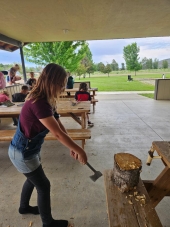
 2
2




∞








 1
1




 1
1




Sy Moen wrote:I too found the film interesting. And... of course tried to reverse engineer the ideas.
I assume the wood chips / mass in the water provides the nitrates for the algae, and at one point they mention running co2 emission from an industrial source into the water for the necessary carbon.
I am also interested in the process of algal biochar and quick search of permies.com did not turn up any hits on "algal biochar" or "algae biochar".
Anyway, very interesting concept. The methane harvesting was kind of awesome.
Country oriented nerd with primary interests in alternate energy in particular solar. Dabble in gardening, trees, cob, soil building and a host of others.




C. Letellier wrote:
If I understood it right the nitrates for the algae were coming from aquaponics. The heat and the CO2 were coming off the burner burning biomatter. Now it may be that all the biomatter was going into a methane digester and this would leave the out flow from that producing the nitrogen too along with nutrients for a huge green house. The burn was heating a pyrolisis unit to make biochar and in the process providing part of the fuel to run this part. And you could leach the ash from the direct burn, burner for other micro nutrients if needed.





Community Building 2.0: ask me about drL, the rotational-mob-grazing format for human interactions.

 1
1




Ask me about food.
How Permies.com Works (lots of useful links)










Community Building 2.0: ask me about drL, the rotational-mob-grazing format for human interactions.











Ask me about food.
How Permies.com Works (lots of useful links)










Community Building 2.0: ask me about drL, the rotational-mob-grazing format for human interactions.











Ask me about food.
How Permies.com Works (lots of useful links)










Julia Winter wrote:Ah. Well, I'm boycotting Facebook, so I guess I'll miss it. I've got too much on my plate anyway.
Community Building 2.0: ask me about drL, the rotational-mob-grazing format for human interactions.

|
Spare the rod, spoil the child. Here, use this tiny ad named Rod:
Homestead Pigs Course
https://permies.com/wiki/365748/Homestead-Pigs
|


